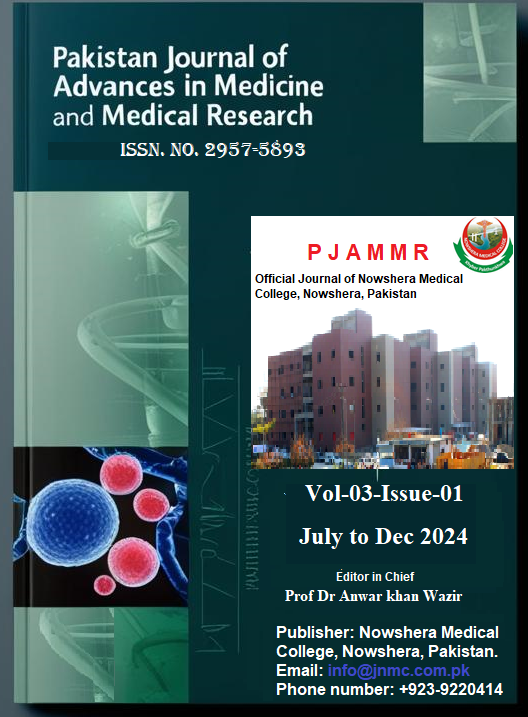Standardization Of Resident’s Handover, Improving Communication And Continuity Of Care For Better Patient Outcome
Quality improvement project (Audit Cycle)
DOI:
https://doi.org/10.69837/pjammr.v3i1.58Keywords:
Resident Handover, SBAR Communication, Patient Safety, Quality Improvement, Standardized Handover, Medical Errors, Continuity of Care, Adverse Events Prevention, Clinical Handover Protocol.Abstract
Background: In effective resident handovers are a major cause of communication failures, medical errors, and compromised patient safety in hospitals. At Ayub Teaching Hospital, Abbottabad, an initial assessment revealed inconsistent and incomplete handovers, leading to delays in care, preventable errors, and adverse events. This Quality Improvement Project (QIP) aimed to develop and implement a standardized SBAR-based handover system to enhance communication, continuity of care, and patient safety.
Aim & Objectives: The primary aim was to establish a structured and standardized handover protocol to ensure accurate and efficient transfer of patient information. The objectives included assessing current handover practices, designing and implementing a structured SBAR-based template, training residents, evaluating its impact, reducing preventable medical errors, and ensuring sustainability through continuous monitoring and feedback.
Methods: Using the Plan-Do-Study-Act (PDSA) framework, a four-week pre-intervention audit (Oct 1–30, 2024) was conducted, where 60 handovers were secretly analyzed to assess completeness and patient outcomes. The findings revealed 70% of handovers were incomplete, with critical omissions in pending tasks (62%), management plans (65%), and code status (45%). A total of 15 adverse events and 3 mortalities were directly linked to poor handovers. Following these findings, a structured SBAR handover template was developed and introduced in a monthly ward meeting attended by faculty, registrars, and residents. The template was made digitally accessible via ward computers and displayed on posters in duty areas. Residents underwent structured training sessions to ensure proper use of the SBAR format. A four-week post-intervention audit (Nov 2–30, 2024) of 50 handovers was conducted to measure improvements.
Results: Post-intervention, handover completeness improved from 30% to 78%, with significant increases in documentation of management plans (+25%), pending tasks (+26%), and code status (+35%). The number of adverse events dropped from 15 to 3, and no mortality was linked to communication failures. 100% of residents reported improved confidence and satisfaction with the new handover system.
Conclusion: Implementing a standardized SBAR handover system significantly improved handover quality, reduced medical errors, and enhanced patient safety. This QIP demonstrates the importance of structured communication protocols in preventing critical information loss and ensuring continuity of care. Further monitoring and periodic audits will sustain and refine this initiative.
Downloads
Published
How to Cite
Issue
Section
License

This work is licensed under a Creative Commons Attribution-NonCommercial 4.0 International License.






